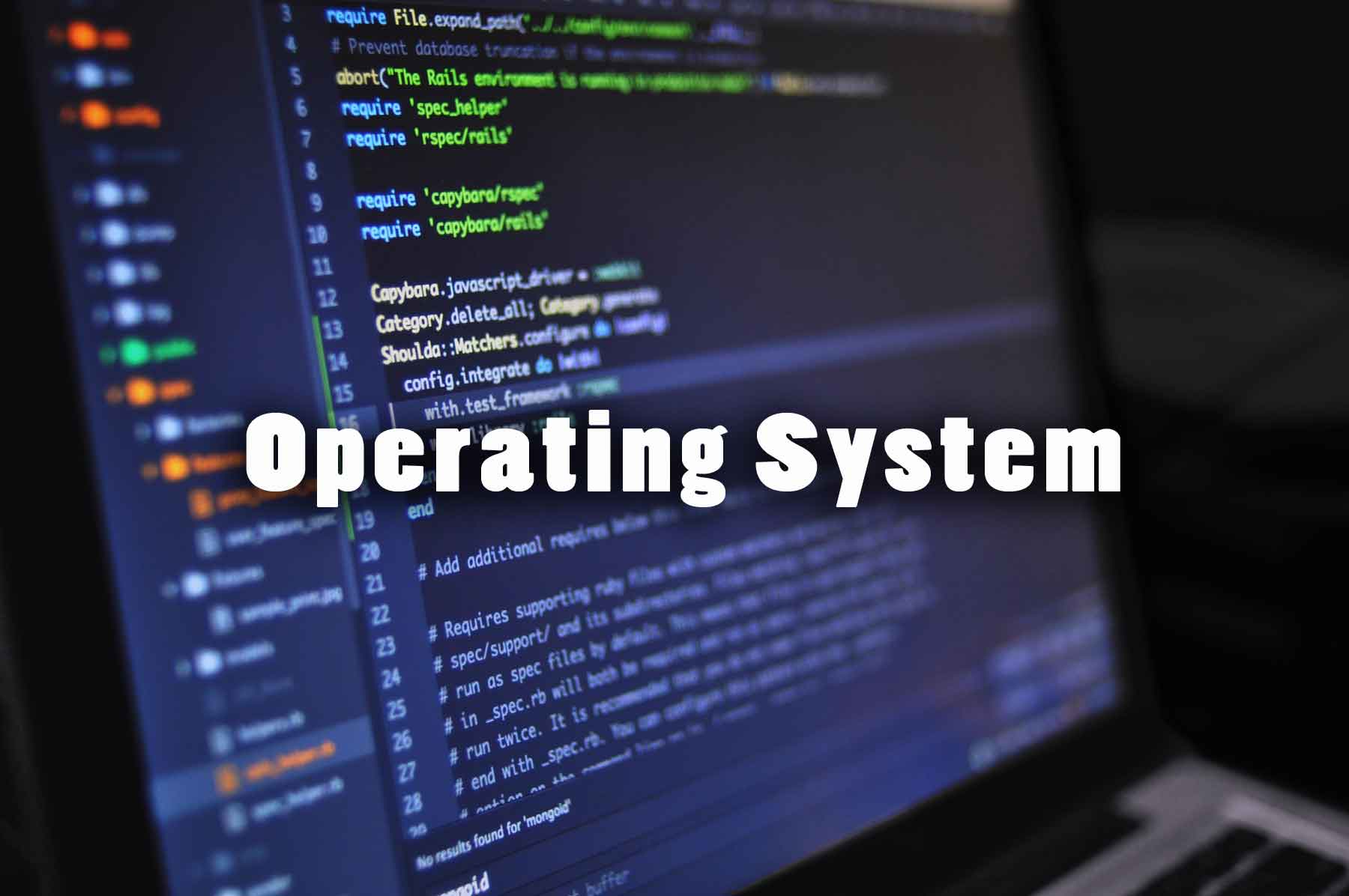Operating System Quiz Questions and Answers Paper
The Free download links of Operating System Quiz Questions and Answers Papers enclosed below. Candidates who are going to start their preparation for the Operating System Quiz papers can use these links. Download the Operating System Quiz Papers PDF along with the Answers.
Operating System Quiz Papers are updated here. A vast number of applicants are browsing on the Internet for the Operating System Quiz Question Papers & Syllabus. For those candidates, here we are providing the links for Operating System Quiz Papers. Improve your knowledge by referring the Operating System Quiz Question papers.

Quiz Questions and Answers on Computer Networking
1. The dispatcher
(a) actually schedules the tasks into the processor
(b) is always very small and simple
(c) puts tasks in I/O wait
(d) never changes task priorities
2. The most complex dispatcher
(a) should always be used
(b) should never be used
(c) is never used on larger computers
(d) should be used only on large computers
3. Round-robin scheduling
(a) is quite complex to implement
(b) allows interactive tasks quicker access to the processor
(c) allows processor-bound tasks more time in the processor
(d) gives each task the same chance at the processor
4. Processor-bound tasks
(a) use the processor more often
(b) use more processor time
(c) use less processor time
(d) always take longer to execute
5. Feedback queues
(a) are very simple to implement
(b) dispatch tasks according to execution characteristics
(c) are used to favour real-time tasks
(d) require manual intervention to implement properly
6. Complex scheduling algorithms
(a) use more resources than they gain
(b) recover more resources than they use
(c) always use many resources
(d) are most appropriate for very large computers
7. I/O intensive jobs
(a) use less processor time than most jobs
(b) you are constrained by their I/O requirements
(c) run more quickly than processor-intensive jobs
(d) should all be executed at the same time
8. The FIFO algorithm
(a) executes first the job that last entered the queue
(b) executes first the job that first entered the queue
(c) executes first the job with the least processor needs
(d) executes first the job that has been in the queue the longest
9. The SJF algorithm
(a) executes first the job that last entered the queue
(b) executes first the job that first entered the queue
(c) executes first the job with the least processor needs
(d) executes first the job that has been in the queue the longest.
10. Checkpointing a job
(a) allows it to be completed successfully
(b) allows it to continue executing later
(c) prepares it for finishing
(d) occurs only when there is an error in it
11. Which of the following is not a feasible schedule without violating any job dead line ?
(a) J2, J4, J1, J3
(b) J4, J1, J2, J3
(c) J4, J2, J1, J3
(d) J4, J2, J3, J1
12. At a single terminal CPU, 40% of all users have no wait to use the terminal and the average wait tine for all users is 50 minutes, what is the average wait tine for those who wait? (Round off to the closest answer)
(a) 60
(b) 70
(c) 80
(d) 100
13. With round-robin CPU scheduling in a time shared system
(a) using very large time slices (quantas) degenerates into First-Come First Served (FCES) algorithm
(b) using extremely small time slices improves performance
(c) using very small time slices degenerate into Last-In-First-Out (LIFO) algorithm
(d) using medium sized time slices leades to Shortest Request Time First (SRTE) algorithm.
14. The portion of the process scheduler in an operating system that dispatches processes is concerened with
(a) activating suspended I/O -bound processes
(b) temporarily suspending processes when CPU load is too great
(c) assigning ready processes to the CPU
(d) all of the above
15. Which is the correct definition of a valid process transition system?
(a) wake up: ready – running
(b) dispatch : ready – running
(c) block : ready- blocked
(d) timer runout :ready- blocked
16. The only state transition initiated by the user process itself in an operating system is
(a) Block
(b) Dispatch
(c) timer runout
(d) wake up
17. A task is
(a) the smallest discrete step in a job
(b) a piece of work
(c) part of I/O
(d) a collection of jobs
18. A process is another name for
(a) a job
(b) a task
(c) paging
(d) the operating system dispatcher
19. Fork is
(a) the creation of a new job
(b) the dispatching of a task
(c) increasing the priority of task
(d) the creation of new process
20. A task in a blocked state
(a) is executable
(b) must still be placed in the run queues
(c) is waiting for some temporarily unavailable resource
(d) is running
| Practice Questions | Objective Papers |
| Quiz | Important Questions |
| Mock Test | Previous Papers |
| Typical Question | Sample Papers |
| MCQs | Model Papers |
21. Semaphores
(a) are used to do I/O
(b) synchronize critical resources to prevent contention
(c) synchronize critical resources to prevent deadlock.
(d) allow processes to communicate with one another.
22. Priorities
(a) are used to schedule processes
(b) increase as a process remains in the processor
(c) are attached to each page in the system
(d) are assigned by the u ser.
23. Resource locking
(a) allows multiple tasks to simultaneously use resources
(b) forces only one task to use any resource at any time
(c) can easily cause a deadlock condition
(d) is not used for disk drives
24. Interprocess communication
(a) is never necessary
(b) allows processes to synchronize activity
(c) is required for all process
(d) is usually done via disk drives
25. Spinning
(a) requires several processes
(b) uses very little processor time
(c) requires the processor to keep trying until successful
(d) should be used for all resources
26. Global locks
(a) are used to avoid local locks
(b) synchronize access to global resources
(c) synchronize access to local resources
(d) prevent access to global resources
27. In which of the following four necessary conditions for deadlock, processes claim exclusive control of the resources they require ?
(a) No pre-emption
(b) Mutual exclusion
(c) Circular wait
(d) Hold and wait
28. The no pre-emption condition for deadlock exists when
(a) each resource is either currently assigned to exactly one process or is available
(b) process currently holding resources granted earlier can request new resources
(c) resources previously granted cannot be forcibly taken away from a process
(d) there must be a circular chain of two or more processes each of which is waiting for a resource held by the next member of chain.
29. Dijkstra’s banker’s algorithm in an operating system which solves the problem of
(a) deadlock avoidance
(b) deadlock recovery
(c) mutual exclusion
(d) context switching
30. Which of the following resources can cause deadlocks ?
(a) Read only files
(b) Shared programs
(c) Printers
(d) All of the above
31. A set or resource allocations such that the system ca allocate resources to each process in some order, and still avoids a deadlock is called
(a) unsafe state
(b) safe state
(c) starvation
(d) greedy allocation
32. A process is said to be in — state if it is waiting for an event that will never Occur.
(a) Safe
(b) Unsafe
(c) Starvation
(d) Deadlock
33. Relocatable programs
(a) cannot be used with fixed partitions
(b) can be loaded almost anywhere in memory
(c) do not need a linker
(d) can be loaded only at one specific location
34. Fixed partitions
(a) are very common in current operating systems
(b) are very efficient in memory utilization
(c) are very inefficient in memory utilization
(d) are most used on large mainframe operating systems
35. A linker
(a) is not necessary with variable partitions
(b) must be run after the loader
(c) creates a load module
(d) is not needed with a good compiler
36. The garbage collector
(a) is critical for efficient virtual memory systems
(b) prevents fragmentation from occurring
(c) is mostly used with fixed partitions
(d) collects fragmented areas of memory
37. The first-fit algorithm
(a) places a program in the first possible partition
(b) places a program in the best possible partition
(c) waits for the correct partition to become available
(d) waits the first program in the best partition
38. The worst-fit algorithm
(a) is used only when nothing better is available
(b) places a program in largest available partition
(c) should never be used
(d) places a program in the smallest possible partition
39. Boundary registers
(a) are used for temporary program variable storage
(b) are only necessary with fixed partitions
(c) track the beginning and ending of programs
(d) track page boundaries
40. Over laying
(a) requires use of a loader
(b) allows larger programs, but requires more effort
(c) is most used on large computers
(d) is transparent to the u ser
41. The root segment
(a) is the bottommost partition in the system
(b) is where the operating system is loaded
(c) is the part of an overlay that is always in memory
(d) is the part of an overlay that is replaced
42. Swapping
(a) works best with many small partitions
(b) allows many programs to use memory simultaneously
(c) does not work with overlaying
(d) allows each program in turn to use the memory
43. The memory allocation scheme subject to “‘external” fragmentation is
(a) multiple contiguous fixed partitions
(b) swapping
(c) pure demand paging
(d) segmentation
44. Dynamic Address Translation
(a) is part of the operating system paging algorithm
(b) is useless when swapping is used
(c) is the hardware necessary to implement paging
(d) stores pages at a specific location on disk
45. The map table
(a) should be as large as possible
(b) should be completely in the fastest hardware possible
(c) is not necessary in the latest operating systems
(d) allows pages to be located when referenced
46. A page fault
(a) occurs when a program accesses a page of memory
(b) is an error in a specific page
(c) is an access to a page not currently in memory
(d) is a reference to a page belonging to another program
47. Demand paging
(a) fetches a page only when needed
(b) fetches pages that are likely to be demanded
(c) pages out pages when that page frame is needed
(d) pages out pages in large groups
48. The LRU algorithm
(a) pages out pages that have not been used recently
(b) pages out pages that have been used recently
(c) pages out pages that have been least used recently
(d) pages out the first page in a given area
49. The reference bit
(a) is set when the page is paged out
(b) is reset when the page is accessed by a program
(c) is set when the page is accessed by a program
(d) is never reset
50. Thrashing
(a) always occurs on large computers
(b) is a natural consequence of virtual memory systems
(c) can always be avoided by swapping
(d) can be caused by poor paging algorithms
51. The working set
(a) contains all pages referenced
(b) contains all the pages that should be kept in memory
(c) is that group of pages boing used by all programs
(d) is always resident in memory
52. Page stealing
(a) is a sign of an efficient system
(b) is taking larger disk spaces for pages paged out
(c) is taking page frames from other working sets
(d) should be the tuning goal
53. Virtual system swapping
(a) allocates all of memory to one program
(b) pages working set pages in and out as a group
(c) is never as efficient as normal paging
(d) is used only on systems that are thrashing
54. An operating system uses a Least Recently Used (LRU) page replacement algorithm for managing memory. Consider the following page reference string where each reference is made in one unit of time.
1, 8, 1, 7, 8, 2,7, 2, 1, 8, 3, 8, 2, 1, 3, 1, 7, 1, 3, 7
Which of the following number of page faults that are generated for this particular LRƯ Case assuming that the process has been allocated four page frames?
(a) 2
(b) 5
(c) 4
(d) 6
55. The term “aging” refers to
(a) boosting up the priority of a process in multilevel of queues without feedback
(b) gradually increasing the priority of jobs that wait in the system for a long time to remedy infinite blocking
(c) keeping track of the time a page has been in memory for the purpose of LRIY replacement
(d) letting job reside in memory for a certain amount of time, so that the number of pages required can be estimated accurately.
56. With a segmentation, if there are 64 segments, and the maximum segment size is 512 words, the length of the logical address in bits is
(a) 12
(b) 14
(c) 15
(d) 16
57. The reference bit is used for the purpose of
(a) implementing NRU (Not Recently Used) algorithm
(b) implementing LRU page replacement algorithm
(c) checking if the page table entry is in cache memory
(d) checking to see if parameters are passed to a procedure by value or by address
58. The principle of “locality of reference” justify the use of
(a) DMA
(b) Polling
(c) Cache memory
(d) Virtual memory
59. The working set” theory of programming behaviour of processes running within an operating system involves
(a) assigning I/0 resources to processes
(b) assigning the CPU to processes
(c) disk scheduling mechanism
(d) the collection of pages a process accesses
60. A high paging rate
(a) may cause high I/O rate
(b) keeps the systems running well
(c) is a symptom of too much processor activity
(d) always creates a slow system
61. The total time to prepare a disk drive mechanism for a block of data to be read from it is
(a) seek time
(b) latency
(c) latency plus seek time
(d) transmission time
62. Which of the following illustrates Associative Memory ?
(a) The address of the data is supplied by the user
(b) Samne as the tracks associated with disk memory
(c) There is no need for an address; the information (data) is used as an address
(d) Data is accessed serially
63. A disk scheduling algorithm in an operating system causes the disk arm to seek back and forth across the disk surface servicing all request in its path. This is a
(a) First Come First Served
(b) Shortest Seek Time First
(c) Sean
(d) Eschenbach scheme
64. Access to moving head disks requires three periods of delay before information is broughi into memory. The response that correctly lists the three time delays for the physical access of data in the order of the relative speed from the slowest to the fastest is
(a) latency time, cache overhead time, seek time
(b) transmission time, latency time, seek time
(c) seek time, latency time, transmission time
(d) cache overhead time, latency time, seek time
65. An unpaged or read-ahead cache associates disk domains with the address of the read and continues for a specific length. The major disadvantage of unpaged cache is that
(a) it allows cache domain to contain redundant data
(b) it does not allow writes to be cached
(c) its access time is greater than that of paged caching
(d) read ahead cache domain blocks are necessarily fixed in size
66. Disk requests are received by a disk drive for cylinders 5, 25, 18, 3, 39, 8 and 35 in that order. 4 seek takes 5 m sec per cylinder moved. How much seek time is needed to serve these requests for a shortest seek first (SSF) algorithm ? Assume that the arm is at cylinder 20 when the last of these reefuests is made with none of the requests yet served
(a) 125 msec
(b) 295 msec
(c) 575 msec
(d) 750 msec
67. Which of the following statements is false ?
(a) Segmentation suffers from external fragmentation.
(b) Paging suffers from internal fragmentation.
(c) Segmented memory can be paged.
(d) Virtual memory is used only in multi-user systems.
68. Ifa virtual memory system has 4 pages in real memory and the rest must , swapped to disk. Which of the following is the hit ratio for the following page address stream. Assume that memory starts empty. Use the First In First Out (FIFO) algorithm.
(a) 10%
(b) 15%
(c) 25%
(d) 31%
69. The maximum amount of information that is available with one position of the disk access arm for a removal disk pack (without further movement of the arm with multiple heads) is
(a) a plate of data
(b) a cylinder of data
(c) a track of data
(d) a block of data
70. If a disk has a seek time of 20 ms, rotates L0 revolutions per second, has 100 words per block, and each track has capacity of 300 words. Then the total time required to access one block is
(a) 25
(b) 30
(c) 40
(d) 60
71. Cached and interleaved memories are ways of speeding up memory access between CPUS and slower RAM. Which memory models are best suited (i.e. improves performance the most) for which programs ?
(i) Cached memory is best suited for small loops.
(ii) Interleaved memory is best suited for small loops.
(iii) Interleaved memory is best suited for large sequential code.
(iv) Cached memory is best suited for large sequential code.
(a) 1 and 2 are true
(b) 1 and 3 are true
(c) 4 and 2 are true
(d) 1 and 3 are true


